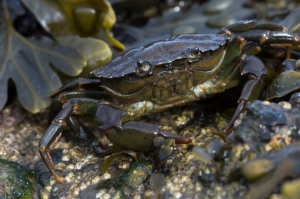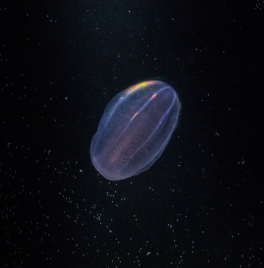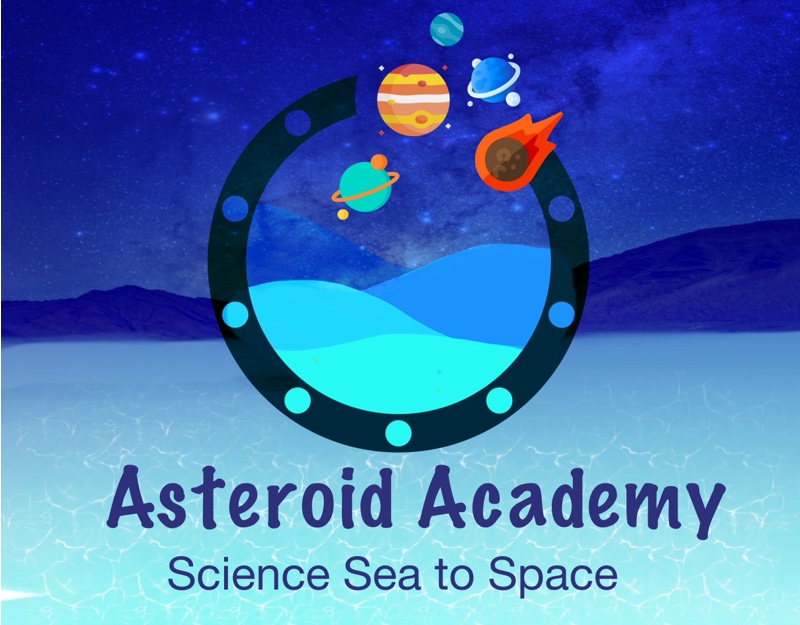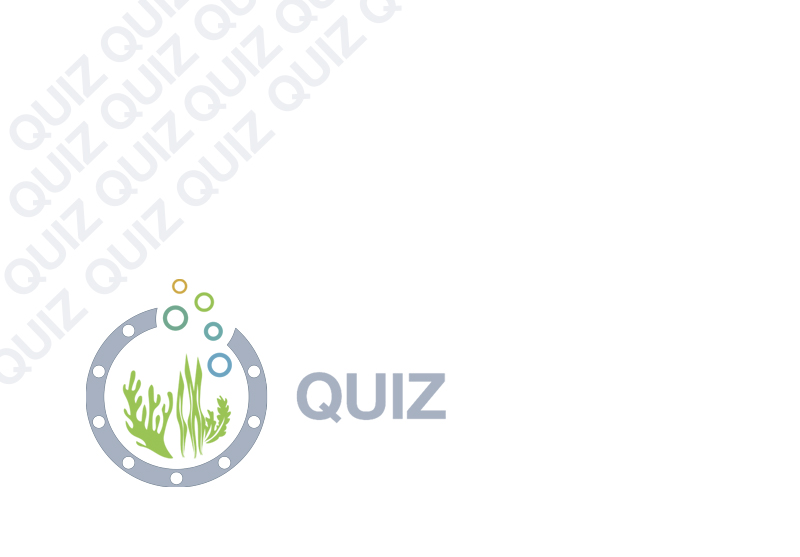
IVS.C | Meet the Invaders!
You know that marine invaders are everywhere; let’s meet a few of these invasive creatures.
Green Crab
Let’s start with this little fellow here – the Green Crab, also known as Carcinus Maenus. This European crab is sold as fish bait in much of the world, and has been carried by ships in ballast water far enough to have established populations on both coasts of North America, in southern South America, Australia, South Africa, and Japan. The problem is that it is a predator of many forms of shore life, including worms and mollusks. In some areas, the crab’s voracious appetite has affected the commercial shellfish industry.
Sea Walnut
The Sea Walnut doesn’t sound terribly threatening, even when called by its  scientific name (Mnemiopsis Leidyi), but this stingless jellyfish-like animal or ctenophora, is native to the east coast of North and South America. In 1982, it was discovered in the Black Sea, where it was transported by ballast water in ships. Eventually, the Sea Walnut also spread to the Caspian Sea and in both the Black and the Caspian Seas, it multiplied and formed immense populations where they contributed to the collapse of local fisheries by feeding on zooplankton that the commercial fish also consume. Now, this unassuming little creature has been discovered in the Mediterranean, Baltic, and North Seas where it will continue eating the local fish out of house and home, forcing them to move on or die off.
scientific name (Mnemiopsis Leidyi), but this stingless jellyfish-like animal or ctenophora, is native to the east coast of North and South America. In 1982, it was discovered in the Black Sea, where it was transported by ballast water in ships. Eventually, the Sea Walnut also spread to the Caspian Sea and in both the Black and the Caspian Seas, it multiplied and formed immense populations where they contributed to the collapse of local fisheries by feeding on zooplankton that the commercial fish also consume. Now, this unassuming little creature has been discovered in the Mediterranean, Baltic, and North Seas where it will continue eating the local fish out of house and home, forcing them to move on or die off.
Veined Rapa Whelk (the image above the title is a Rapa Whelk)
We’ve all seen cute little snails in the garden after it rains, slowly making their way across the pavement or clinging to leaves. They’re just little things that don’t cause a lot of trouble.
But the Veined Rapa Whelk – AKA Rapana Venosa – is large marine snail native to the northwest Pacific, from Vladivostok, Russia to Hong Kong and it’s a snail of a different colour. In 1946 it was discovered in the Black Sea and later spread to the Mediterranean Sea, and in 1998, it was found in the Chesapeake Bay where it was probably transported in the ballast water of ships. Although beautiful, this animal is a voracious predator that preys on bivalve mollusks and it has severely reduced shellfish populations in the Black Sea. Now it has established a presence in European coastal waters from Norway to Spain, and also in the Rio de la Plata estuary in South America. Its role as a predator in the Chesapeake Bay is being studied, and it is expected to colonize other parts of the east coast.
Asian Clam
Asian Clams are typically found in Korea, China, and Japan, but they have managed to find their way to the San Francisco Bay area, where they are considered a massive biological disturbance because of the effect they have on the area’s soft sediment communities. That means they eat or push out many of the organisms living in the Bay area waters. Many people believe that the Asian clam is even responsible for the collapse of some local commercial fisheries, because they drive out the fish that the fisheries need to survive.
Ironically, they were originally brought to the area by Asian immigrants in the early 1920’s as a food source. Now they can be found in North Carolina and even in Lake Tahoe – a lake on the border of California and Nevada and absolutely in no way near the ocean – where they’ve been blamed for algal blooms and threaten to displace native montane pea clams and ramshorn snails.
These are just a few examples of invasive species that are wreaking havoc on their new environments, places where they have few natural predators and can dominate an entire ecosystem.
Curriculum Reference Links
- Biological World / Systems and Interactions / 5: Students should be able to conduct a habitat study; research and investigate the adaptation, competition and interdependence of organisms within specific habitats and communities
- Biological World / Sustainability / 10: Students should be able to evaluate how humans can successfully conserve ecological biodiversity and contribute to global food production; appreciate the benefits that people obtain from ecosystems




